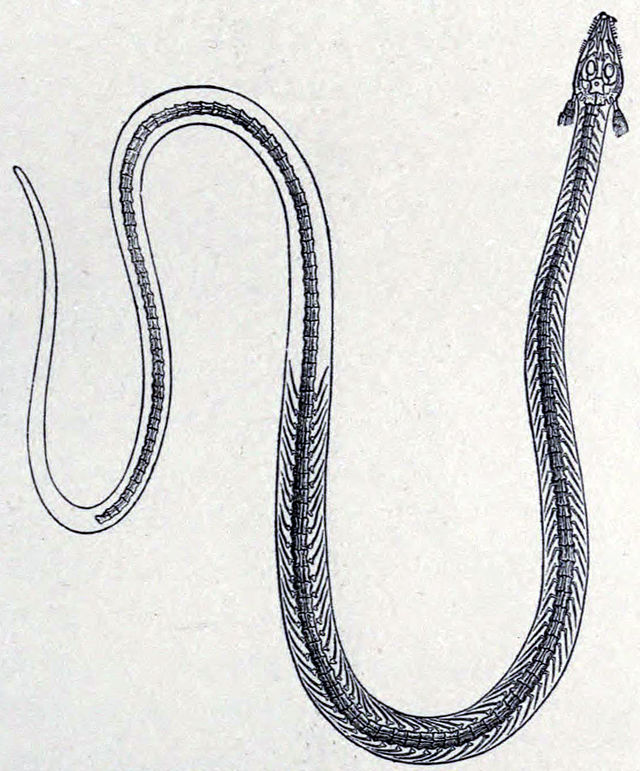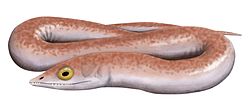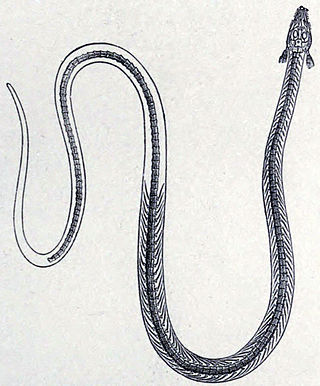Phlegethontia
Extinct genus of tetrapodomorphs From Wikipedia, the free encyclopedia
Phlegethontia is an extinct genus of aïstopod tetrapodomorphs from the Carboniferous and Permian periods of Europe and North America.[1]

| Phlegethontia Temporal range: Late Carboniferous to Early Permian | |
|---|---|
 | |
| Life restoration of P. longissima | |
| Scientific classification | |
| Domain: | Eukaryota |
| Kingdom: | Animalia |
| Phylum: | Chordata |
| Clade: | Sarcopterygii |
| Clade: | Tetrapodomorpha |
| Order: | †Aistopoda |
| Family: | †Phlegethontiidae |
| Genus: | †Phlegethontia Cope, 1871 |
| Species | |
| |
| Synonyms | |
| |
It was about 1 metre (3.3 ft) long, and possessed a lightly built skull with many openings, unlike some earlier relatives.[2]
"Dolichosoma" longissima, named by Antonin Fritsch in 1875, has been reassigned to the genus Phlegethontia and is now considered to be P. longissima.[3][4] "Dolichosoma" has been considered to be a nomen nudum because the holotype was inadequately described through a layer of matrix by Thomas Henry Huxley in 1867.[5][6]
References
External links
Wikiwand - on
Seamless Wikipedia browsing. On steroids.
